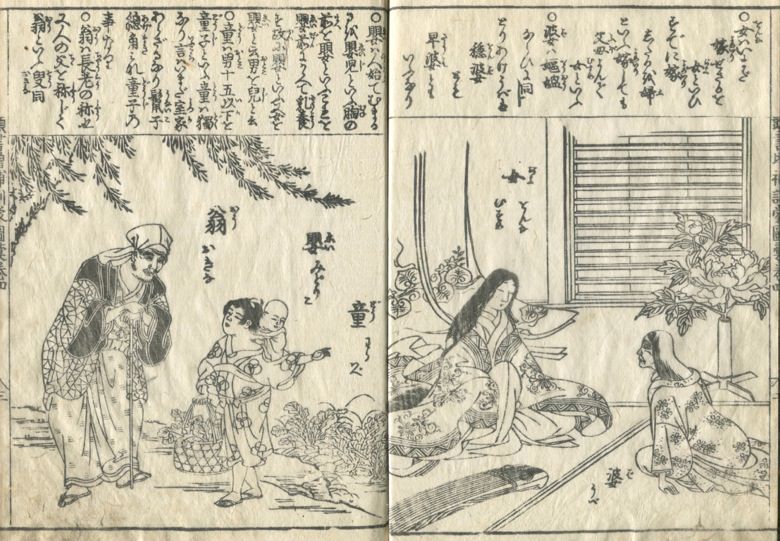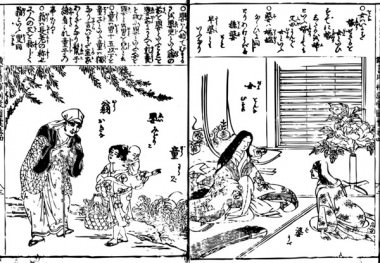A young woman and old woman are drawn on the right.
In the text, when calling it a “woman”, two or more reading is given.
Before marriage, when parents call after “a woman (Fu)” and marriage, it is written as “the woman (daughter).”
For old women, a thing like the kind of “婆 (Ba)” is written.
“嫗媼” seems to be the language which probably reads in an order of “媼嫗”, saying “Oou”, and puts an old woman with the present age.
Calling “うば (nurse)” “隠婆 (おんば)”, this points out a midwife.
Although the word “早婆 (so ば)” was also written, he does not understand which was carried out clearly 。
The child, the baby, and the old man are drawn on the left.
although the baby’s thing is written to be a “baby”, it is being written that “嬰 (Ei)” seemingly means that people start, and so calls it a baby.
Moreover, 嬰 is a female baby and is “兒 (a child’s old Chinese character” points out a man’s baby.).
“童 (Wara)” points out a child aged 15 and below.
moreover, the word showing the hairstyle of children, such as “髫髪子 (Unaiko)” and “総角 (Agemaki)”, has also pointed out “童.”
it seems that the old man is written to be “翁(Ou/Okina)”, and points to a senior.
右には若い女性と老婆が描かれています。本文では、「女」という時に複数の読み方を与えています。嫁入り前は「女(かふ)」、嫁入り後も父母が呼ぶ際は「女(むすめ)」と書かれています。老婆の方は「婆(ば)」の種類のようなものが書かれています。「嫗媼」は現代ではおそらく「媼嫗」という順序で「おおう」と読み、老婆をさす言葉のようです。「うば(乳母)」を「隠婆(おんば)」と呼び、これは産婆を指します。「早婆(そうば)」という言葉も書かれていますが、はっきりとした意味は分かりませんでした。
左には子供と赤子とお爺さんが描かれています。赤子のことを「嬰児」と書いていますが、「嬰(えい)」は人が始まるという意味だそうで、それ故に嬰児というのだと書いています。また、嬰は女の赤子で、「兒(児の旧漢字」は男の赤ちゃんを指します。「童(わら)」は15歳以下の子供を指します。また「髫髪子(うないこ)」や「総角(あげまき)」など子供の髪型を表す言葉も「童」を指しています。老人は「翁(おう/おきな)」と書かれており、長老をさすようです。

